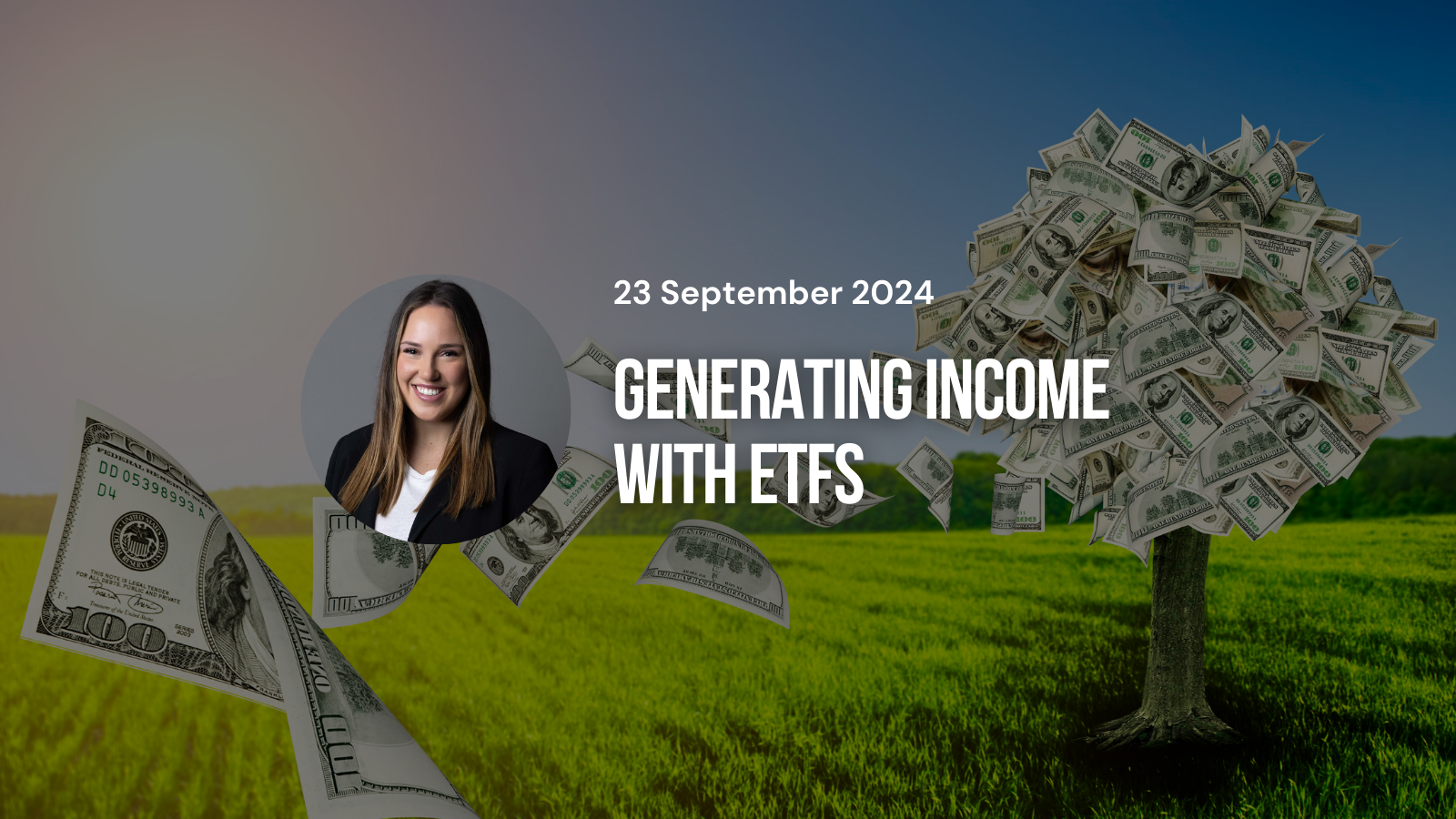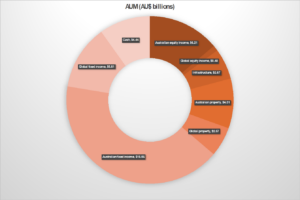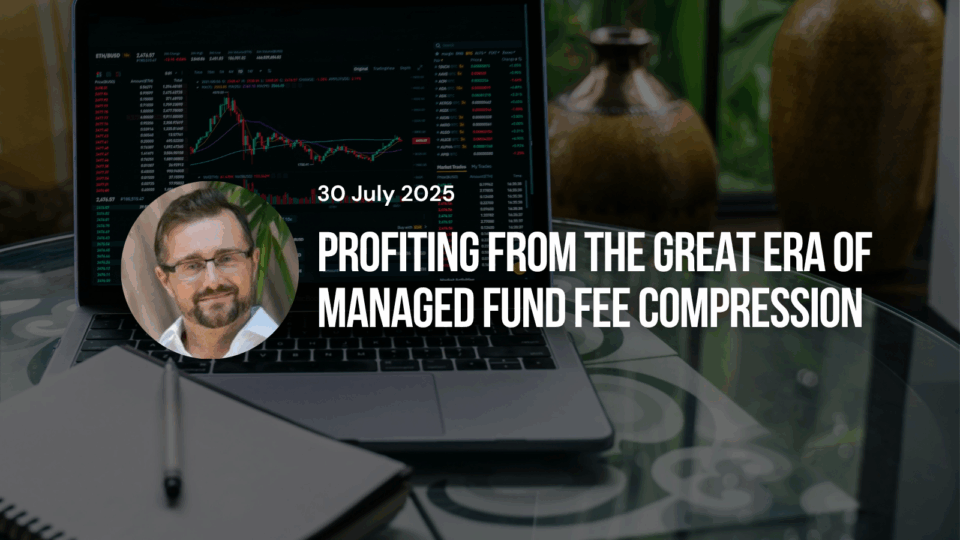
By Annabelle Dickson, Betashares | Monday, 23 September
Disclaimer: The content of this article is provided for informational purposes only. It does not constitute, and should not be interpreted as, a recommendation or endorsement of any particular product or service. Readers are encouraged to conduct their own research and exercise their own judgment when making purchasing decisions. Sharesight shall not be held responsible for any consequences resulting from reliance on the information provided within this article.
When we think of investing for regular income, the first options that usually come to mind are cash, term deposits, rental properties and dividends from shares.
Similarly, when we think of ETFs, broad-based equities are often what comes to mind first. But income generating ETFs include a wide range of options from equity income to fixed income and cash.
Using ETFs to generate income in your portfolio means you can skip the hassle of picking individual ASX stocks which usually pay dividends semi-annually, dealing with the unpredictability of rental income — where bills and bad tenants can wipe out months of earnings — and hopping between banks for the best term deposit rates.
More than $40 billion has been invested in various income-focused ETFs listed on the ASX, as shown in the chart below. That’s more than 20% of the total ETF market, which hit $208 billion (AUM) in June 20241!

Source: ASX Investment Products monthly update (data), Betashares (chart). As at 31 July 2024.
6 factors to consider when comparing income generating ETFs
Given the large number and variety of ETFs available which aim to generate regular income, narrowing down the selection can seem like a daunting task at first. Here are some factors to consider when selecting funds aligned to your goals.
- Yield: Bigger isn’t always better. While high yields are attractive, they may involve taking on more risk or sacrificing growth. The level of the yield is important, but it needs to be considered along with other factors.
- Yield consistency: Look for ETFs with a history of regular distributions. This can also give you a clue about the volatility and growth of that income. If the ETF is relatively new, you could consider examining the yield of the ETF’s index if it’s available, or you could assess the average yield for the asset class to understand how it may perform in different market conditions.
- Yield sustainability: This one is a little more subjective, but still an important consideration. You’ll need to consider whether the current level of yield can be sustained. For example, if several major constituents of the ETF recently paid large special dividends, this may provide a temporary boost to the yield, but might not be sustainable.
- Cash flow timing: Many income generating ETFs offer monthly or quarterly distributions. If your position allows it however, you may still want to consider ETFs that pay semi-annual distributions.
- Costs: Focusing on the overall fees of the investments in your portfolio can have a big impact over the long term, and unlike returns, fees are within your control.
- Risks: As with any investment category, ETFs come in various forms and carry their own risks, which we’ll explore below. Some focus on Australian shares, others on international shares or fixed income. An emerging category is ‘covered call ETFs’. Each type carries a different level of risk, so it’s important to understand what they invest in, their strategy, and how diversified the portfolio is.
4 types of income ETFs to build your portfolio
1. Dividend income
Dividend income is one of the most straightforward ways to generate cash flow with ETFs.
Companies share a portion of their profits with shareholders through dividends. When you invest in an Australian shares ETF, you benefit from exposure to multiple companies that may pay regular dividends, making it easier to receive income without having to pick individual stocks.
Australian investors who have exposure to Australian-domiciled companies may be entitled to franking credits, which may reduce the investor’s tax liability.
While not designed with an income focus in mind, Australian shares ETFs like Betashares Australia 200 ETF (A200), are considered an option for income generation because they provide exposure to companies that have historically paid relatively high dividend yields such as Commonwealth Bank, Telstra and BHP through broad investment in the Australian market.
A key advantage of using an ETF is the frequency of distributions. For example, if you held a significant portion of your portfolio in CBA and BHP, you’d have to wait until March and September/October for interim and final dividend payouts, respectively, while also being exposed to concentration risk and over-reliance on income from a few companies.
With an option like A200, the ETF collects dividends from a basket of stocks throughout the year and distributes them after the end of each quarter, helping with cash flow management.
And while the market naturally experiences ups and downs, the diversification from exposure to 200 companies means that a significant dividend cut by a few won’t impact you as much as it would if you were heavily exposed to only a few companies.
2. Equity income
Looking to squeeze a little more income out of your stock holdings? This category of equity income ETFs takes things up a notch by employing a covered call strategy (explained in more detail in this video), which generates additional income, on top of regular dividends, from the sale of call options.
While this strategy limits potential upside in a strongly rising market, it typically helps enhance income and smooth out returns in a neutral or gradually rising market.
Covered call ETFs, such as Betashares Australian Top 20 Equity Yield Maximiser Fund (managed fund) (YMAX), can be a particularly attractive option for investors seeking to earn enhanced income from blue-chip stocks and who are seeking to reduce portfolio volatility.
Equity income ETFs are designed for those who are seeking regular income while still providing the potential from some capital growth.
3. Cash and money markets
Some cash ETFs provide exposure to Australian cash deposits, with attractive monthly income distributions.
Investors interested in enhancing the returns from their cash allocation may also consider enhanced cash ETFs like the Betashares Australian Cash Plus Fund (managed fund) (ASX: MMKT). MMKT provides monthly income to investors by offering diversified exposure to not only Australian bank deposits, but also a range of more sophisticated money market securities usually only available to institutional investors.
4. Fixed income
If you’re seeking reliable income, fixed income ETFs — which invest in government or corporate bonds — could be just the ticket. Fixed income investments often have lower levels of risk compared with other assets such as shares.
Bonds are traditionally seen as a ‘safe haven’ asset because when shares go down, bonds have traditionally tended to go up. This cushions the impact on an investor’s portfolio and can provide a smoother ride overall. Bonds pay a regular income stream to investors, called ‘coupons’ — some pay a fixed rate of interest, others pay a floating rate. Because bonds include a fixed amount to be repaid at a set date in the future, they can offer a high degree of capital stability.
It’s important to note though, that bonds still have a degree of capital volatility due to factors such as perceptions of a bond issuer’s creditworthiness and changes in interest rates.
Fixed income ETFs like the Betashares Australian Composite Bond ETF (OZBD) make it easy to invest in a wide variety of Australian corporate and government bonds
ETFs: A great tool for income generation
No matter what your income goals are, ETFs can be an effective tool for building a diversified, income-generating portfolio. By tapping into dividend-paying stocks, covered call strategies, cash and money markets or bonds, you can craft a portfolio that fits your needs and risk tolerance — all while paying regular distributions
With ETFs, you get the best of both worlds: diversification and passive income, without the need to actively manage individual investments.
Plus, depending on your investment strategy and ETF choices, you can either collect your distribution in cash — typically paid out monthly, quarterly or semi-annually — or reinvest your distribution to enable compounding returns.
About Betashares
Betashares is a leading Australian financial services company, serving over one million investors and their advisers across the broadest range of ETFs on the market. With a commitment to innovation and investor education, Betashares has become a trusted name in the ETF space and now offers direct investing in 350+ ASX traded ETFs through the Betashares Direct investing platform.
Track your ETFs with Sharesight
With Sharesight’s portfolio tracker you can track the performance of your ETFs alongside the rest of your investments, including dividends, currency fluctuations, diversification, tax and more. Sign up for free to start tracking your performance today.
|
There are risks associated with an investment in each Fund, including market risk, security specific risk, industry sector risk, index tracking risk, and for YMAX, use of options risk, and for OZBD and MMKT, interest rate risk and credit risk. Investment value can go up and down. An investment in each Fund should only be considered after considering your particular circumstances, including your tolerance for risk. For more information on risks and other features of each Fund, please see the Product Disclosure Statement and Target Market Determination, both available at www.betashares.com.au. |
References
This article is brought to you by Sharesight, a proud partner of the Australian Shareholders’ Association.






